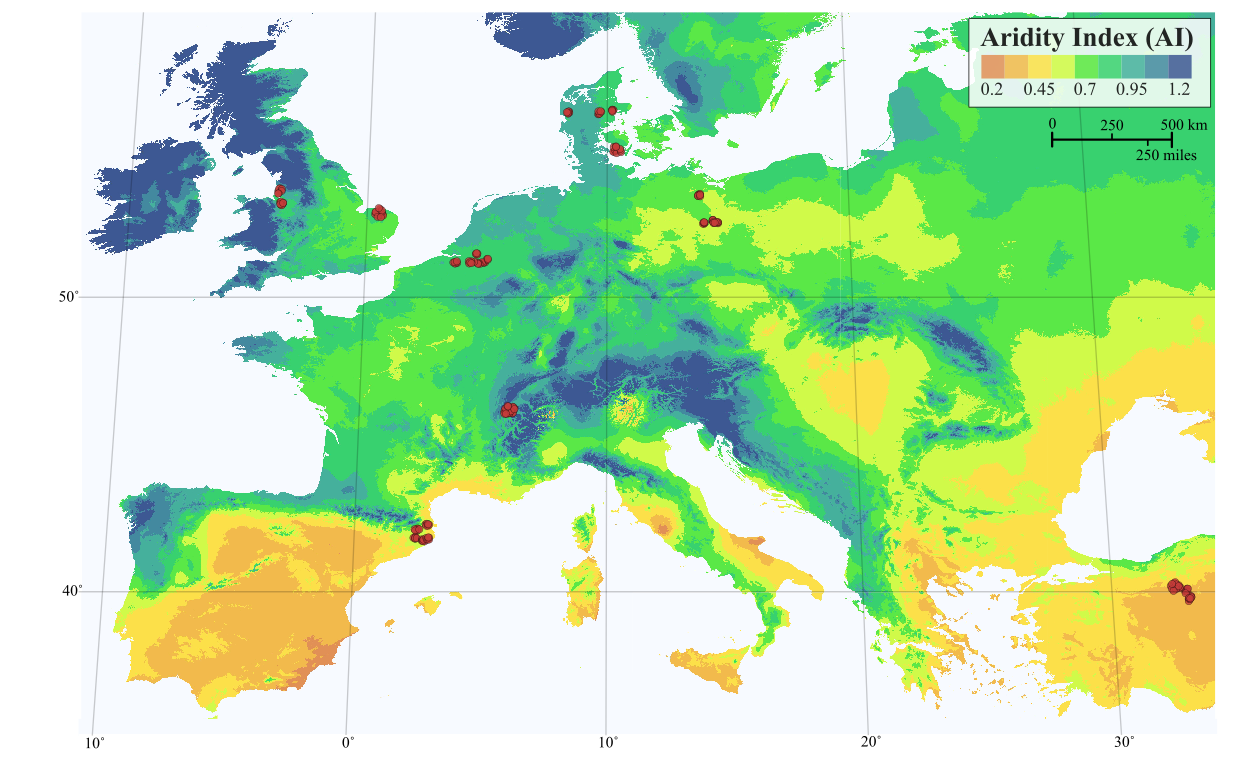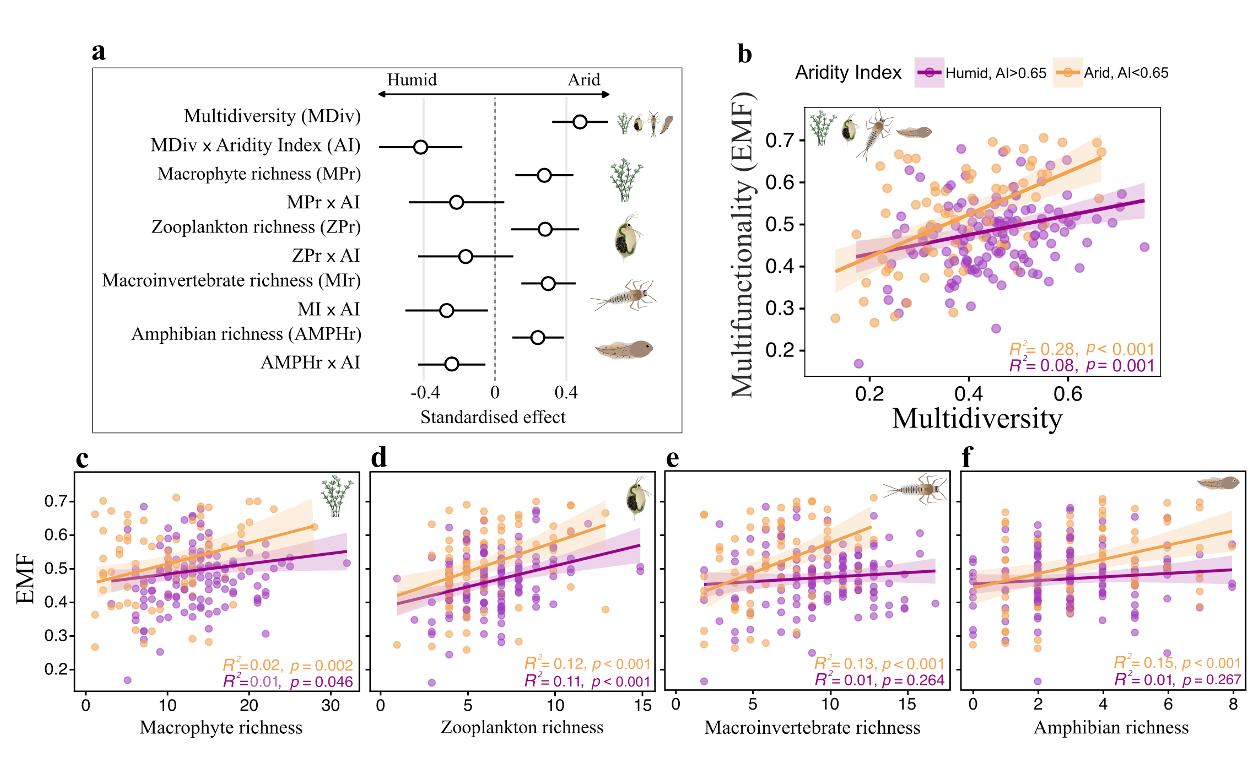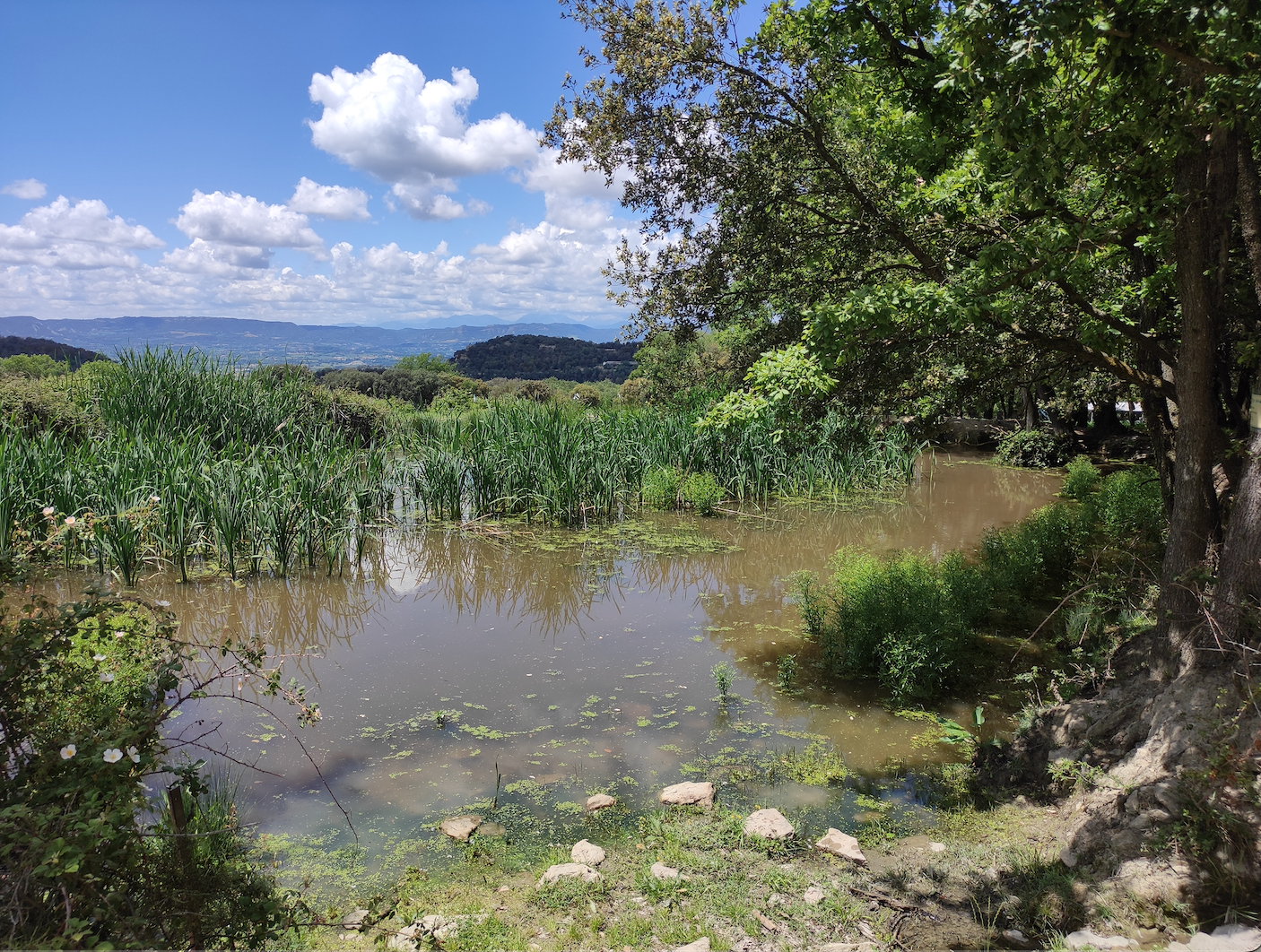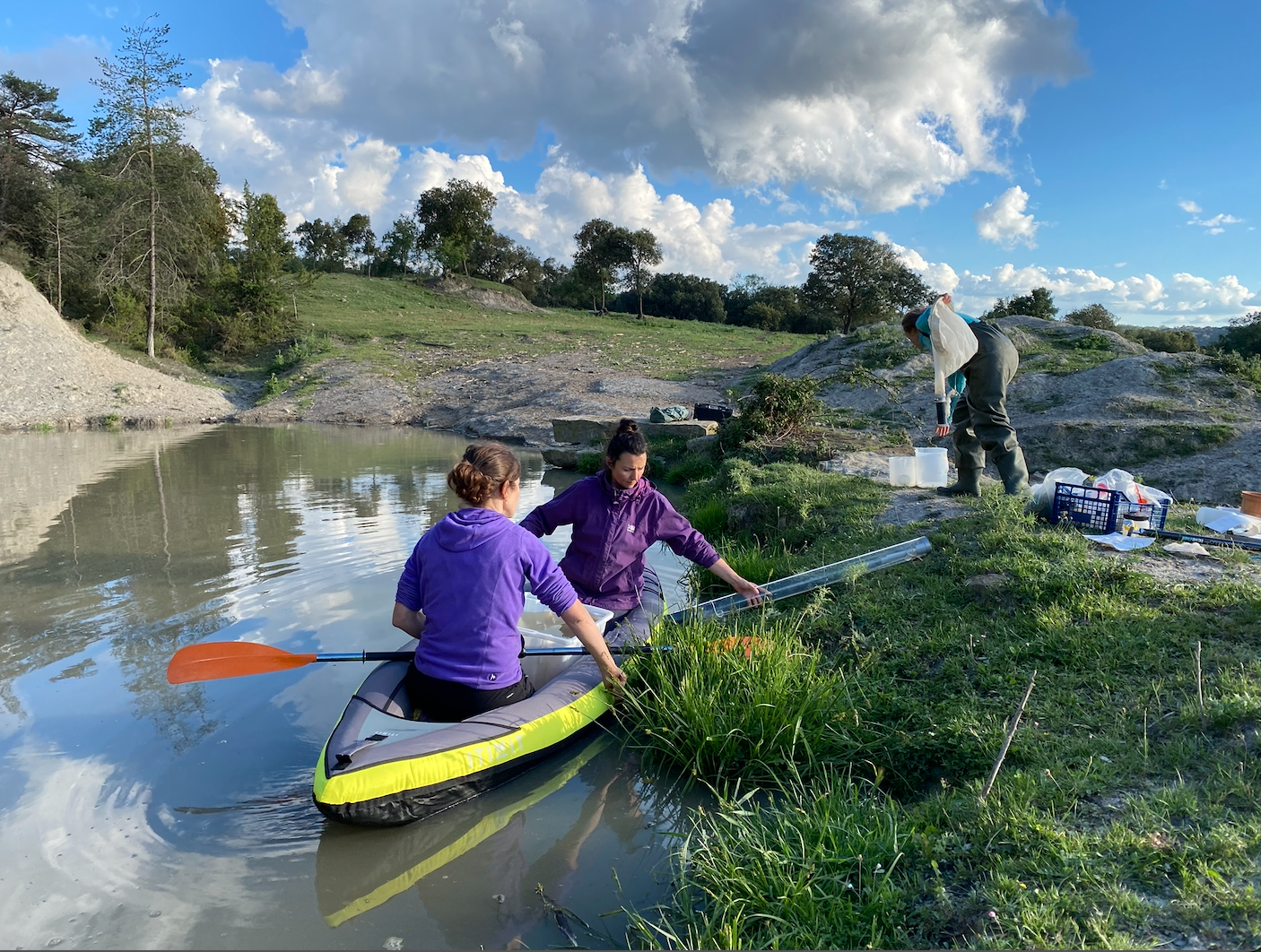Maria Cuenca-Cambronero
Field and Lab Work
Field Work
The overarching aim of the PONDERFUL project was to support the improved implementation of ponds and pondscapes as Nature-Based Solutions (NBS) for climate change (CC) mitigation and adaptation, biodiversity conservation, and the delivery of ecosystem functions and services. This goal was achieved through the generation of integrated knowledge on biodiversity, ecosystems, social and economic factors, and policy frameworks, by collecting data on pond ecosystems at both local and international scales. The project was structured around three main objectives: 1) to quantify the contribution of networks of ponds (“pondscapes”) to climate change mitigation and adaptation, and to assess how they deliver key ecosystem services, both directly, and indirectly through enhanced biodiversity conservation; 2) to identify opportunities, cost-effectiveness, and barriers for implementing pond-based NBS for climate adaptation and mitigation; 3) to build the social and ecological knowledge needed to guide the practical implementation of climate-resilient pond systems and pondscapes as blue infrastructure. A major strength of PONDERFUL was its large-scale, stratified sampling campaign, conducted across eight countries in Europe (Belgium, Denmark, Germany, Spain, Switzerland, Turkey, the UK) and one in Latin America (Uruguay).
As part of this project, I led the field sampling campaign in Spain and the data analysis for Work Package 2 (WP2), which aimed to determine how biodiversity, ecosystem state and processes, and ecosystem services (ES) co-vary and interact in ponds and pondscapes across broad climatic gradients. WP2 also investigated how climate change may alter the interrelationships between biodiversity, ecosystem functioning, and service provision. My specific focus was on the biodiversity–ecosystem function (B–EF) relationship and how it varies across gradients of land use and aridity. The results of this work are presented in a manuscript currently under review in Nature Ecology & Evolution. Our findings provide strong evidence that biodiversity makes a significant positive contribution to ecosystem multifunctionality in small, standing freshwater bodies, particularly in arid regions. Furthermore, we found that multiple ecosystem functions are negatively associated with nutrient levels, highlighting the potential benefits of conserving and restoring pond biodiversity to maintain critical ecosystem functions in the context of global environmental change.
Lab Work
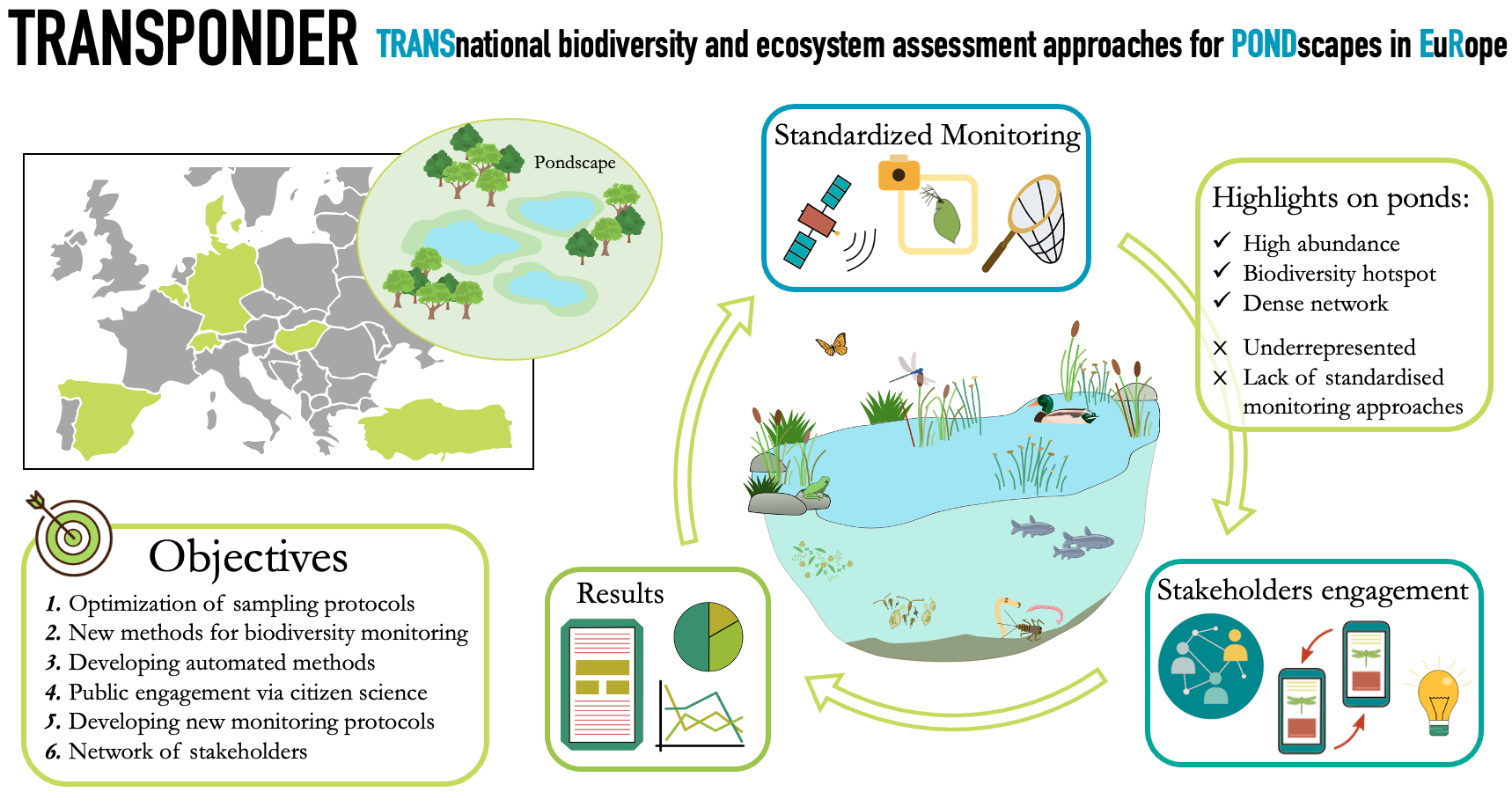 During my six months visit at the laboratory of Biology of Marine Molluscs and Ecosystem Associated at the University of Caen I acquired experience on animal’s dissections, microtome-paraffin section, probe design, western blot, PCR, RNA extractions and in situ hybridization.
During my six months visit at the laboratory of Biology of Marine Molluscs and Ecosystem Associated at the University of Caen I acquired experience on animal’s dissections, microtome-paraffin section, probe design, western blot, PCR, RNA extractions and in situ hybridization.
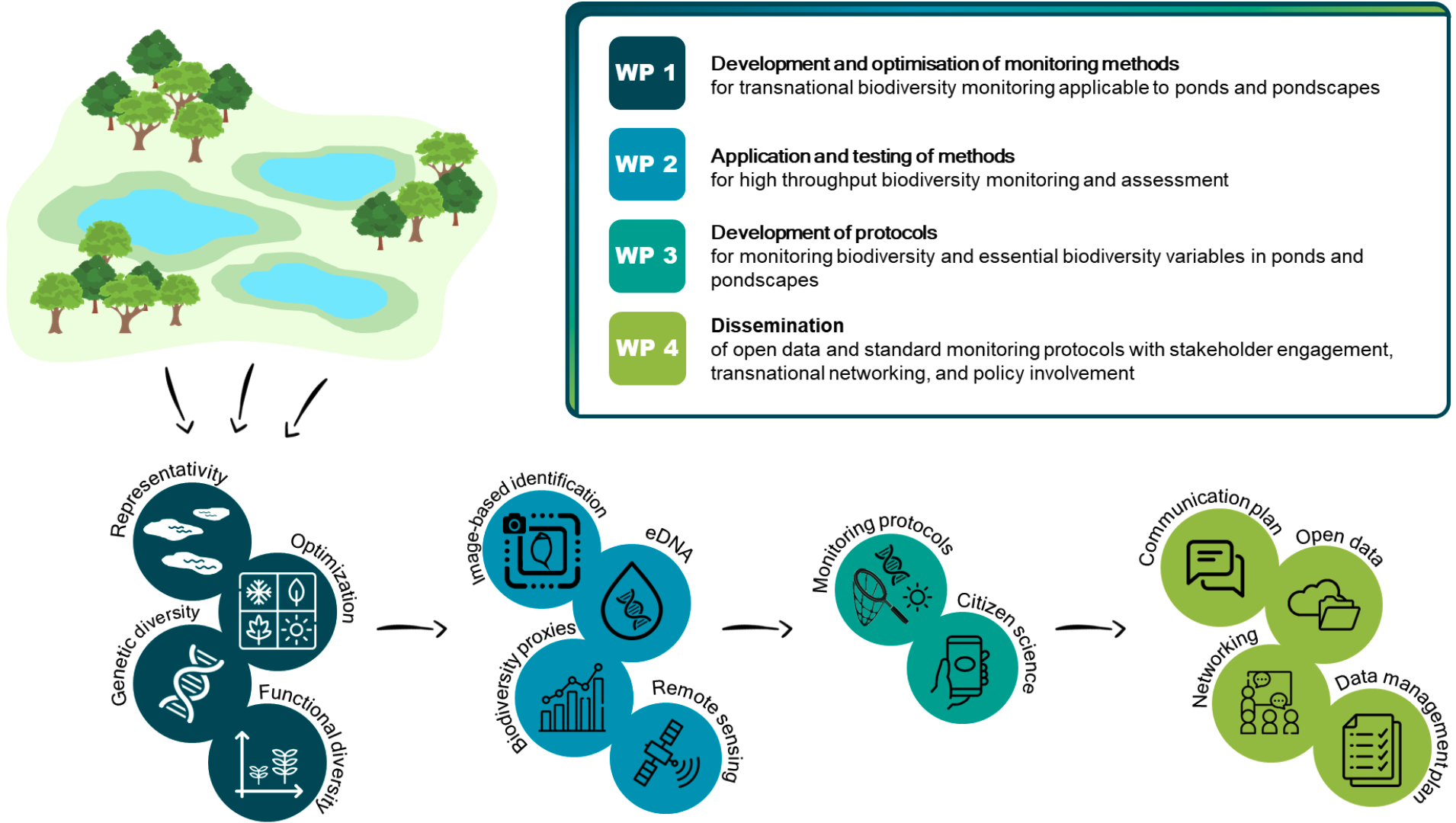 During my PhD project I oversaw protocol optimisation, DNA and RNA extraction and quantification with several molecular biology techniques (Qubit, agarose gel, qPCR, tape station and nanodrop) to optimize the sample throughput required for population genomics and functional genomics investigations including automation and miniaturization of DNA and RNA extractions, amplifications, quality assurance, and sequencing, resulting in my ability to process 500 samples simultaneously. I also performed microsatellite analysis. During my postdoc, I performed DNA extraction and protocol optimisation for de novo sequencing.
During my PhD project I oversaw protocol optimisation, DNA and RNA extraction and quantification with several molecular biology techniques (Qubit, agarose gel, qPCR, tape station and nanodrop) to optimize the sample throughput required for population genomics and functional genomics investigations including automation and miniaturization of DNA and RNA extractions, amplifications, quality assurance, and sequencing, resulting in my ability to process 500 samples simultaneously. I also performed microsatellite analysis. During my postdoc, I performed DNA extraction and protocol optimisation for de novo sequencing.
In this project, I have a leading role on WP1, which focuses on assessing the functional diversity of ponds. Functional diversity represents an important dimension of diversity, providing information on ecosystem functioning and resilience. First, we will analyse the trait distribution patterns based on species-specific trait values found in the literature and targeted databases. Secondly, to assess the extent to which this approach accurately quantifies functional diversity, we will also directly quantify trait distributions from field samples by individual measurements of species from zooplankton and macroinvertebrates. Patterns of functional trait diversity can be related to species diversity indices and pond characteristics.

